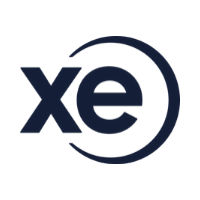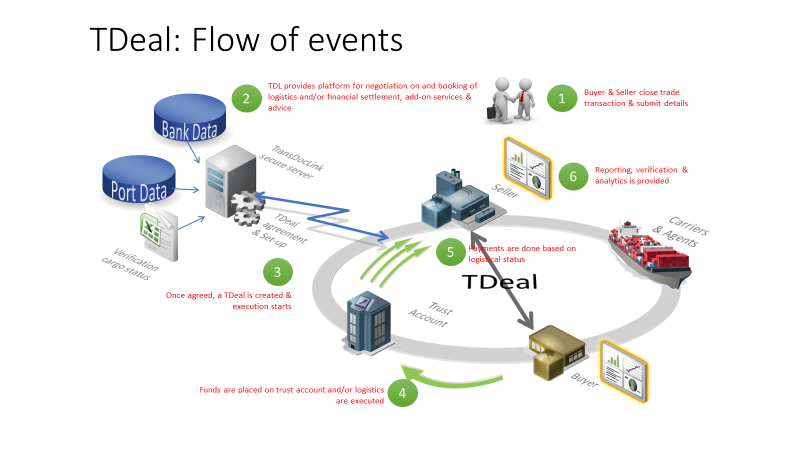| 14-04-2020 | Carlo de Meijer | treasuryXL
The European Banking Federation (EBF), the European Association of Co-operative Banks (EACB) and the European Savings and Retail Banking Group (ESBG) point out that the crisis has brought to the fore the importance of well-functioning payments services.
The three groups have put together their vision for payments in the EU over the next five years, as they “seek to meet changes sparked by a mix of evolving customer needs, regulatory action, technology and innovation, and increased competition”.

Top of the list of priorities is the importance of developing instant payments across the EU that allows for both the differentiation of EU companies and the reduction of dependency on the dominant non-EU payment card schemes.
But reading the document not one single word was mentioned about using blockchain or distributed ledger technology. It seems banks are increasingly getting in the defensive mode worrying the disruptive impact of this technology on their business.
Some critical remarks
Looking into the report the focus is rather limited. It shows a rather isolated EU-oriented view. It does not take into account the new realities such as globalisation of the payments world, the upcoming of new technologies and the global role of organisations such as Visa and MasterCard, but also the likes of Facebook and Google.
It is too much EU but above all too much euro-area focused, while not taking into account the cross border element especially towards non-euro EU countries.
The report also does not go into more detail towards the various technologies including Big Data, Artificial Intelligence and above all blockchain.
Present state of EU payments market
But let us first look at the present state of the EU payments market. And what blockchain could mean to improve. As EU banks you cannot deny the outside world. I agree, most European domestic payment systems are pretty efficient. But not where one has to transfer money cross-border, especially where it relates to non-euro countries.
Most established centralised payment systems were designed decades ago, in a completely different world. While they are considered to be reliant, secure and stable domestically i.e. inside individual EU countries, these centralized systems have not been able to catch up with the needs of our digital, open and hyper-connected world.
Banks have continued to use the old-style correspondent banking systems for international payments – despite their inherent weaknesses. Notably, these systems are expensive, slow, and complex. In the correspondent banking system, both the originating bank and the foreign bank retain their own ledgers, from which they make reconciliations and settlements. This may lead to a lack of transparency, but also make them vulnerable for hacks.
According to a SWIFT and EuroFinance joint survey, lack of payments traceability, invisibility on banking fees, and amount discrepancies are the key concerns in cross border payments. It can take days to clear traditional cross-border wire payments, which carry fees as high as 10%. According to a McKinsey Research, cross border-payments take 3–5 days, which is quite long for corporates seeking to receive money. In the event of a dispute or investigation, the duration can be longer.
Disruption
New technologies are revolutionizing the way we pay and transfer money all over the globe. With the advent of mobile banking, e-commerce, and digital wallets, banks have to rethink their correspondent banking system of making cross-border payments. Blockchain is another area that – if adopted in a more massive way – could majorly transform the global payment systems and disrupt banks, causing them to realign or rethink their products.
SWIFT defensive stance
So it is not that strange banks are increasingly in the defensive. SWIFT is still the dominant payment-processing ecosystem with more than 11,000 banks. Blockchain, through its distributed ledger, however may disrupt SWIFT’s operations in the future. To neutralize the rapid adoption of blockchain in the cross-border payments industry, SWIFT developed a cloud solution called Global Payments Innovation (gpi) to connect all clients in the payment chain. Currently, gpi accounts for more than 55 percent of SWIFT cross-border payments. Half of these transactions are reaching the recipients within minutes, but all of them within 24 hours.
Although SWIFT plans to rely on common standards, core architecture, and APIs to be a leader in the industry, it is also slowly embracing blockchain technology. SWIFT has launched a proof-of-concept (PoC) trial with R3′s Corda platform, which is blockchain-powered, to initiate payments that then go to gpi.
How can blockchain improve payments?
Though blockchain is still in its early stages, this technology has a number of inherent characteristics presenting a fundamentally new way to transfer information and value over digital networks.
This technology could play a huge and central role in payments, underpinning core market infrastructure as well as end-user products, as a source of efficiency, innovation and competitive advantage.
As it is slowly maturing, blockchain technology could gain the trust of banking institutions and adopted widely in the coming years. From large banks and enterprises optimizing global liquidity, to retail stores accepting payment in digital currencies, to new forms of customer identification for retail transactions, blockchain could permeat the payments landscape at an accelerated space.
New forms of payment rails could “blur the lines” between currencies and countries, while cryptography solutions like zero knowledge proof could shift paradigms in areas such as identity, compliance and data privacy.
What are the real benefits?
Blockchain is a promising technology for payment processing. The broad implications for payments, especially improving settlements’ times, removing the middleman and security of cross-border transactions are hard to ignore.
The ability to speed up the payments process, improve capabilities when it comes to cross-border payments, reducing fraud by using smart contracts and making the whole payment processes more efficient and transparent are all elements that may impact its future potential and use.
Efficiency
Blockchain’s primary feature is its efficiency. Because the core idea of a decentralised ledger technology (DLT) is to forego centralised institutions, paying on a blockchain is “as easy as clicking send.” The distributed ledger facilitates the bilateral, immutable distribution of value with the assistance of a settlement agency. Blockchain, allows the sender and the receiver, as nodes in the network, to have a complete copy of the ledger. In such a scenario, there are no correspondent banks/intermediaries involved, eliminating any chances of manipulation. The results are no money transfer waiting periods or unnecessary third-party processing fees. Blockchain-based cryptocurrencies can be transferred (and recorded for auditing purposes) instantaneously across the world, increasing liquidity and efficiency in the markets.
Security/Safety
Another important feature of blockchain technology is safety. Blockchain allows for the safe transfer of money between different individuals, currencies and countries by securing all transactions on the network with cryptography. The crux of many of its purported benefits for the enterprise is its decentralized nature, which promotes visibility and makes it more difficult for data to be manipulated. The transactions are linked with previous transactions and are distributed to all the participants in the network. For a hacker to tamper with any transaction, he/she must alter all the previous ones, which is (almost) impossible. Additionally, the use of blockchain smart contracts can halt payments when agreed terms are violated.
Cost reduction
And blockchain may support real-time domestic and cross-border payments at lower costs compared to traditional payment services. Blockchain technology completely eliminates the need for intermediaries and facilitate a direct transfer over the platform, thereby eliminating foreign exchange fees while increasing speed of transfer. Instead of incurring these fees, blockchain allows customers to pay only a nominal fee or sometimes no fee at all.
The present state of blockchain adoption in payments
Of course, blockchain technology is still in their early ages and largely still immature. Blockchain payments are not (yet) mainstream and many banks and payment service providers are just testing it, trying to combine the so-called old monetary system with the new one (blockchain solution based values or solutions). Most institutions are still reluctant to embrace blockchain fully until there is broader support for it.
But what about Ripple?
A leading player in the blockchain payment world is Ripple. Its RippleNet blockchain platform facilitates transaction of global payments at a rapid speed, allows users (mostly small business) make payments across the globe and send and receive money in local currency, requiring lower capital amounts for cross-border payments. The company’s ledger technology secures, tracks and reconciles payments, so small businesses have a transparent history of all incoming and outgoing payments.
RippleNet has a product called xRapid, that is already providing low-cost liquidity to financial institutions responsible for facilitating cross-border payments. xRapid can facilitate the process without relying on mandatory pre-funded nostro accounts, as is the case in a correspondent banking system for the execution of cross-border payments, thereby lowering the cost of cross-border transactions. As a result, the transactions occur in a matter of minutes, saving time on recipients.
Currently, the network of banks and commercial platforms has grown to 365, and they are now able to resolve problems that delayed cross-border payments, such as missing data and compliance checks. As more banks join the network, payment delays will reduce importantly.
The Ripple payment system is still in strong competition with SWIFT but is super-fast and can settle a cross border transaction in a matter of few seconds where SWIFT takes more than 3 days at times. Ripple is much more cost effective as well.
Along with this also blockchain platform Corda R3 is helping financial institutions to settle payments.
From hype to more realism
The excitement about blockchain has subsided over the last couple of years. The blockchain hype is over and we are now in the trough of disillusionment, according to Garner’s Hypecycle. Lots of experiments and R&Ds have been taken place from start-ups to central banks, however no full scale working use case has been presented at the moment.
We now moved into a stage of “rational practicality”. However, that is not all bad for the further development of blockchain, as “in the trough is where the real work gets done”. The industry knows what is possible, but also is learning what is practical given the complexity of cross-border payments. Blockchain — assuming it is attached to relevant, pragmatic use cases — can add incremental value to a business or other organization.
Regulatory barriers
One of the primary barriers is the complex global regulatory framework surrounding money and its underlying infrastructure. Central banks, governments and regulatory bodies around the world have varying perspectives and attitudes towards blockchain and its implications to critical matters such as money supply, privacy and financial crime.
As a result, most payment-related innovations either get trapped in ‘proof-of-concept’ mode with limited options for global scale, or end up buried in complicated cross-jurisdiction approval processes. The question now is not will blockchain work, but rather how do we put it to work to create more efficiency in global payment systems and can we get regulatory bodies on-board.
What should banks do?
Inevitably, banks will have to re-evaluate and revamp their existing payment systems to meet the needs of their customers with or without blockchain. However, it is increasingly clear that the scale seems to be tipping towards blockchain given the various benefits including its transparency, speed, and cost of transactions. In the realm of cross-border payments, some financial institutions are already working with blockchain providers to give their customers fast, secure, and cheap services.
When applied correctly, it has the ability to significantly change the way organizations do business with one another. As the global payments ecosystem continues to transform in response to a rapidly shifting commerce landscape, we may see the number of blockchain applications in payments exponentially growing.
A growing number of financial institutions world-wide have reached the point where they recognize blockchain as something that’s not going away and realize that they have to be involved in it if they don’t want to be disrupted by other payments players that use blockchain to bypass slower-moving banking infrastructure.
So, European banks, if you can’t beat them, join them.
By the way, a joint effort of ECB and European banks in creating a European digital currency would be a great step forward.

Carlo de Meijer
Economist and researcher
Source













